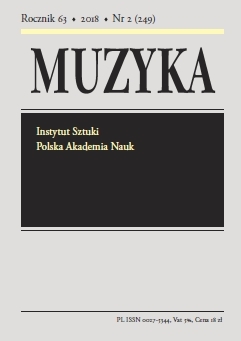Muzyka ludowa po obu stronach Tatr – podobieństwa, różnice, związki, kierunki oddziaływań
Folk music to the north and to the south of the Tatra Mountains. Similarities, differences, connections, directions of influence
Author(s): Zbigniew Jerzy PrzerembskiSubject(s): Music
Published by: Instytut Sztuki Polskiej Akademii Nauk
Keywords: Podhale region; Tatra Mountains; Slovak folklore;folk music;ethnomusicology;
Summary/Abstract: Beginning in the last decades of the nineteenth century, representatives of the artistic, literary and academic circles visiting the Tatra Mountains and the Podhale region started taking interest in highlanders’ culture, including music culture, and its distinct character. This interest became more intense during the period between the two world wars. An erroneous belief took roots that highlanders’ folk culture, including folklore, had ancient origins. A firm conviction became widespread that the region at the foot of the Tatra Mountains, owing to the centuries of geographical and cultural isolation, had preserved the characteristics of ancient Polish culture. The same beliefs applied to folk music. However, research into the sources of the songs performed in the Podhale region challenged those assumptions. It was eventually established that the distinctive features of music from the Podhale region in comparison with the music from other regions in Poland results from its proximity to the border and an interplay of various national and regional cultural influences, and not from its alleged archaic origins. As for the Slovak region of Liptov, which borders Podhale on the south, the influence in the field of music folklore were mutual. Until the last quarter of the nineteenth century, highlanders’ songs and music in the Podhale region shared many characteristics with the music folklore of other Polish regions (Lesser Poland in particular), but later started to assimilate the features of the Slovak folklore of the Liptov region, which was initially stimulated by outsiders’ interest. This trend was the most prominent in the Rocky Podhale region.
Journal: Muzyka
- Issue Year: 63/2018
- Issue No: 2
- Page Range: 43-58
- Page Count: 16
- Language: Polish

